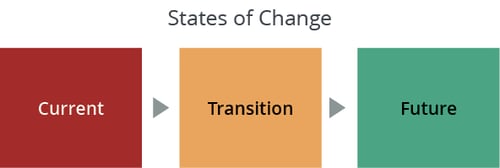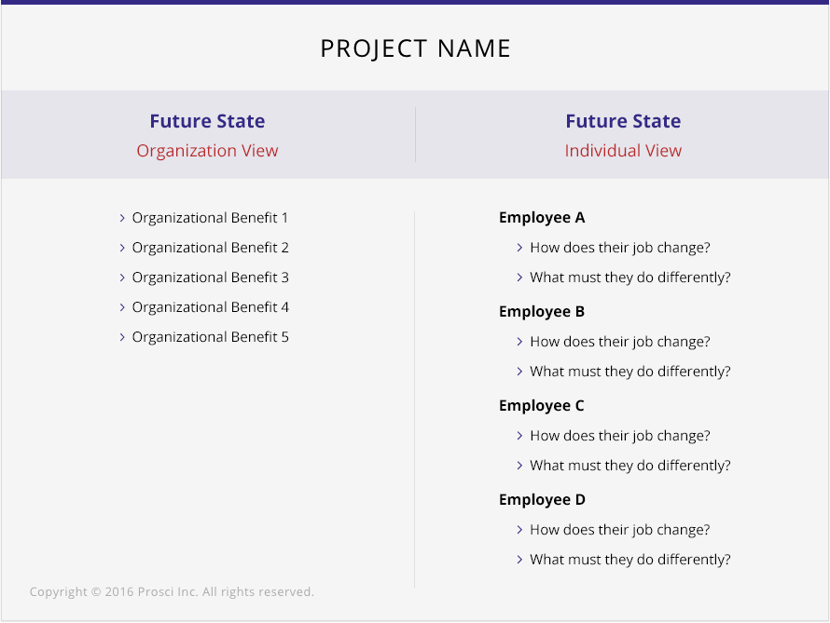Connect Change Management to Business Results: Future States Exercise

2 Mins
Updated: July 17, 2024
Published: November 12, 2016

The idea of change occurring in three distinct phases can be found in most change management literature, dating back to the cultural anthropologist Arnold van Gennep, who studied rites of passage in cultures around the globe in the early 20th century. But how the states of change apply to individuals and their personal transitions is often less known. The Future States exercise is a simple way to help people in your organizations see more clearly while gaining the buy-in you need for change management success.
3 States of Change
From Kurt Lewin to William Bridges, Richard Beckhard to Daryl Conner, Jeanenne LaMarsh to Prosci, the explanation of change as a movement (transition) from how we had done things (current) to a new way of doing things (future) is prominent. Even systems used to develop technical solutions are often based on the delta between an "as is" (the current state) and a "to be" (the future state).

However, many project teams and business leaders think about the future state only from an organizational perspective: documented and managed processes, a production process with fewer errors or variations, an integrated data system instead of disparate legacy systems, and so on. Although this is certainly a necessary perspective, all of these projects and initiatives ultimately impact individuals and how they do their jobs.
The Future States Exercise
The goal of this exercise is to extend the current-transition-future model one level by adding the perspective of individual future states. This is a great exercise to do with project teams and leaders who struggle to understand how change management fits in their project plan and how it will lead to more project benefits and realized objectives.

Steps for completing the Future States exercise:
- Start with a blank sheet of paper or white board.
- Draw a line down the middle.
- On the left side, describe the future state from the organization's perspective—the organizational benefits that the project or initiative is trying to achieve (usually an easy task for a project team or leader).
- On the right side, describe the future state for five individuals impacted by the change (i.e., how their own job will be different after the project is implemented).
Positioning Change Management
The change management connection for this exercise is the perspective of change on two levels: the organizational level and the individual level. You may find that your project team can instantly define the future state from the organization's perspective, but struggle to define individual future states.
You will know the team understands the differences when you hear them say things like:
- "Thank you for helping me start to look at the numerous future states that this project is going to create."
- "Change management is about enabling and encouraging impacted individuals to reach their own future states."
- "By working together on the project, we can achieve the organizational and individual future states that will result in the improved performance we are trying to achieve."
This exercise can be eye-opening for many who have always thought about change strictly in terms of the organizational perspective. On a single page, you can introduce the individual level of change and start the discussion about how to best facilitate these changes.
What This Means for You
The case for change management can certainly be made more analytical, more data-driven and more rigorous. However, the first step in building buy-in and commitment to change management is helping your project teams redefine how they view change—away from a strictly technical view of the project and toward a more complete view that includes the individuals who must ultimately engage with and adopt the change.



